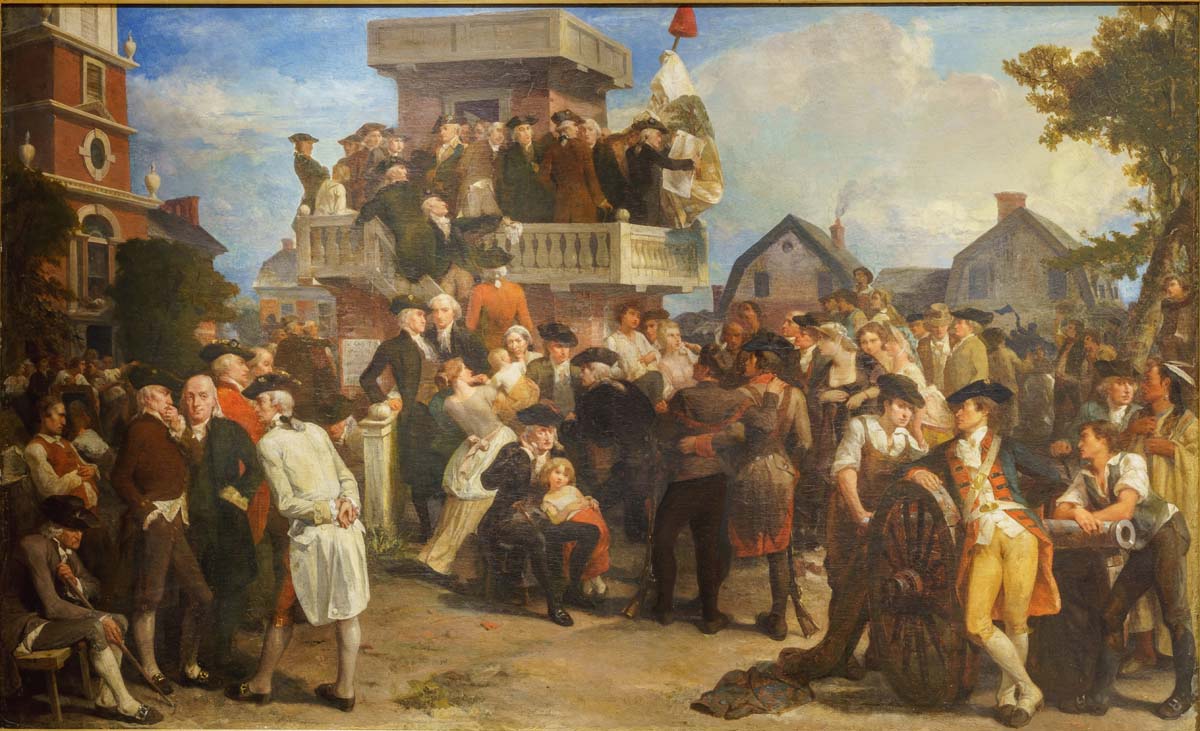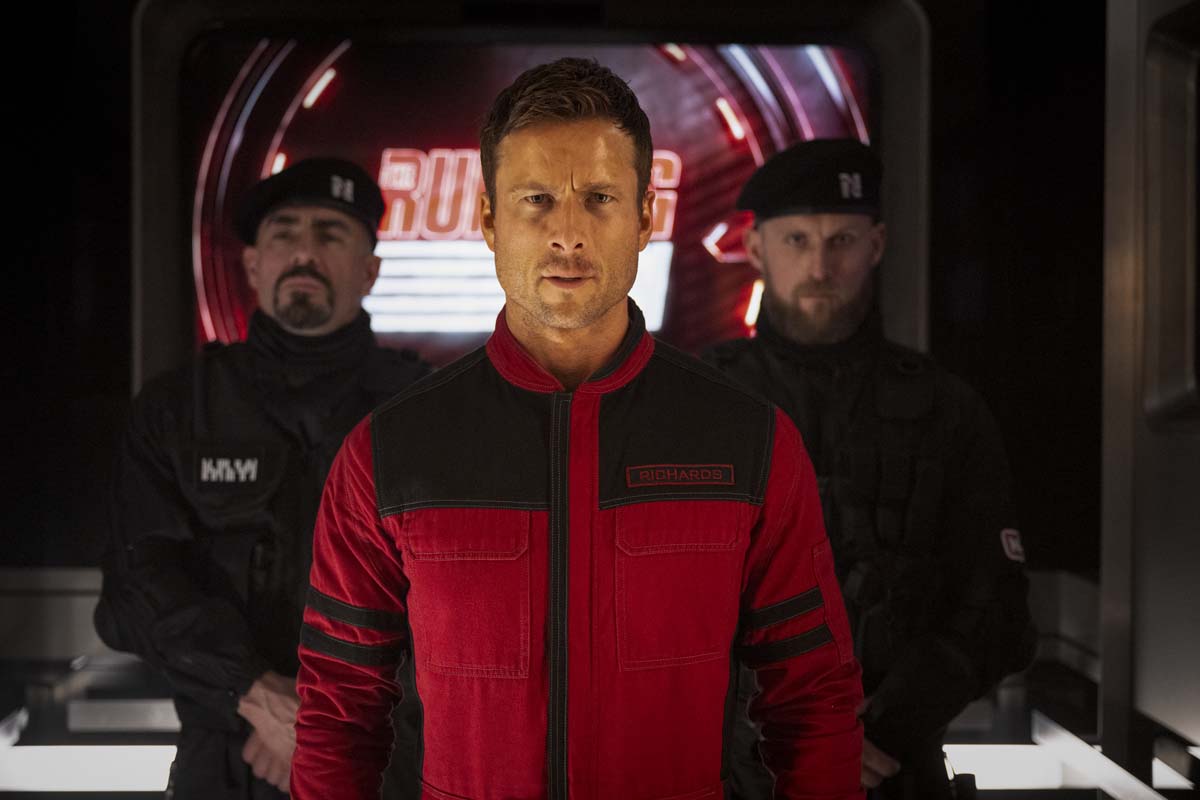A House of Dynamite
A discussion of the traits of a good editor, the advantages of cutting a movie linearly, and the sensitive nature of the editing room.
Today on Art of the Cut, we speak with multi-Oscar-winning editor Kirk Baxter, AC,E about editing Kathryn Bigelow’s latest film, A House of Dynamite, now playing on Netflix.
Kirk’s been on Art of the Cut before to discuss Gone Girl, Mank, and The Killer and the TV series, Mindhunter. His other films include The Girl with the Dragon Tattoo, Social Network, The Curious Case of Benjamin Button, and Zodiac.
Kirk, it’s so nice to have you on Art of the Cut again. Thank you so much for taking the time to talk to us about A House of Dynamite.
My pleasure.
What do you think is the most important trait for an editor? Not necessarily an editing skill, but a human trait that indicates success or capabilities as an editor?
Well, I think it’s a mixture of things. Confidence mixed with being pliable. The first rule I’ve said to assistants is you’ve got to be able to be in the room. As in, have people want to be next to you or not mind that they’re next to you.
Meaning you can’t be a prick or a pain in the ass, or a loud mouth, or just too opinionated or negative. I find that if I’m pushing back on something, I do it through the work, not through my personality.
What kind of collaborative relationship did you and director Kathryn Bigelow have? You’ve worked with a bunch of different directors throughout your career, and I’m assuming they all collaborate differently.
That’s the part where you’ve got to be adaptable. It’s my job to help the director and absorb their tastes. When your tastes align, it all becomes easier. That was the case with Kathryn. She works in a very particular way. It’s almost like documentary.
Filmmaking for her has a sort of ruthless honesty. It’s honesty first with everything, so that kind of rules the day. Then all of the other aspects of filmmaking and your ways of working with other directors becomes secondary with Kathryn. She’s more interested in making something that feels like it was found – that is entirely credible.
You talked about having a shared kind of vision or sense of aesthetic with the director. Did you - just before either you interviewed with her or before you edited - watch her films?
I did. I went down and met with her on set. We talked a little bit on the phone. She was curious about things that I’ve done with Fincher and our style of working, then she described how she shoots on set, and I told her, “We don’t do that.”
I think she wanted to feel that I was comfortable, not that she was comfortable with me, but more that I was comfortable in her process of working.
What she tends to do a lot is that Kathryn will create a stage and light 360 degrees. With Jeremy Hindle, the production designer, everything will be usable and live and everything in every drawer and monitors already with imagery on them and it’s a complete, believable scenario.
Barry Ackroyd, the cinematographer, sort of hangs on the periphery of that with three cameras and comes in on zoom lenses. Typically, actors don’t know when they’re in a close-up and when they’re not. They’re just sort of doing their thing.
It’s a reactionary type of filmmaking that gives it that sort of very honest response. So Barry’s playing catch up to the actors’ performances, and I’m playing catch up to what Barry captured. And Kathryn is sort of the conductor of people.
You mentioned that Kathryn wanted to know how Fincher worked. What was that style?
Dave would block out what he’s going to do. He will do a lot of masters that are almost like rehearsals, to work out what the blocking is going to be.
Then, once he’s got the master down, he’ll drill into the coverage. It’s a lot of repetition of action so that everything matches well. It’s very, very, very different.
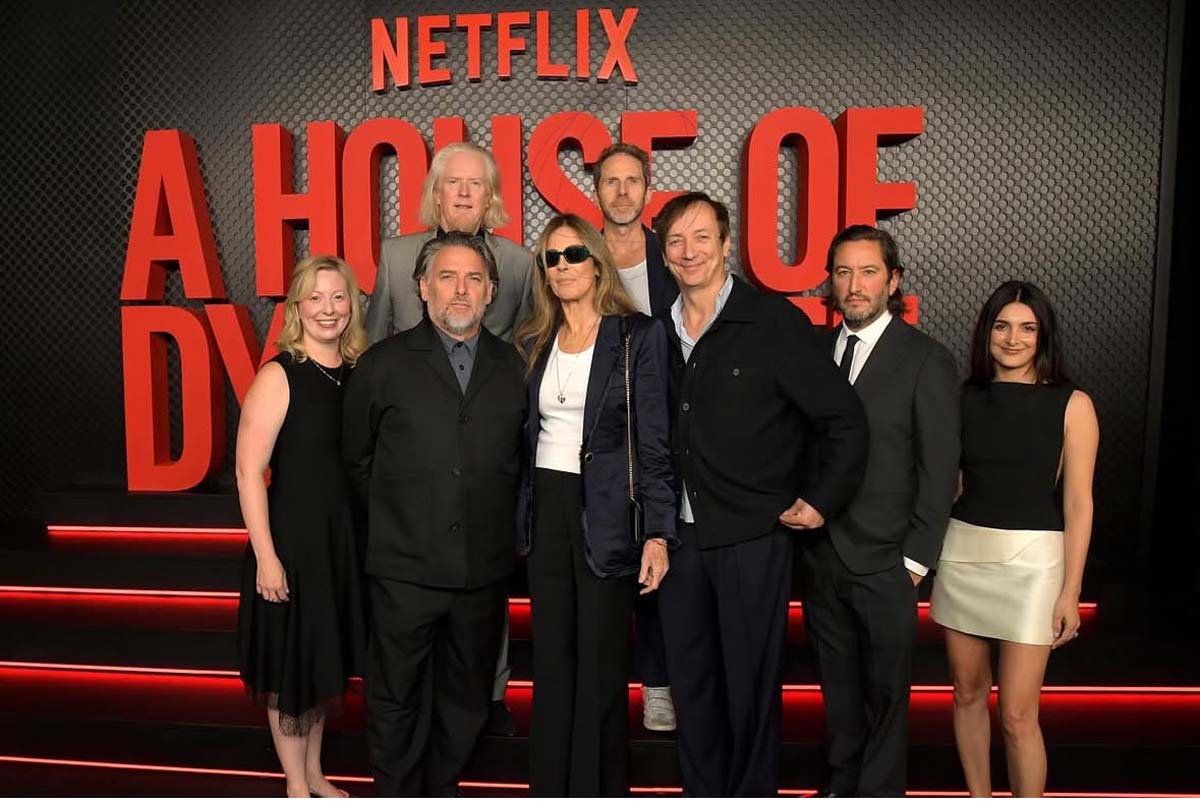
First Row: Casting Director, Susanne Scheel; Prod Designer, Jeremy Hindle; Director, Kathryn B=igelow; Composer, Volker Bertelmann; Producer, Greg Shapiro; Co Producer, Sumaiya Kaveh. 2nd Row: Sound design, Paul Ottosson; Editor, Kirk Baxter, ACE
As you said before, “a documentary style.”
Yeah. It is very much that. So I would find that with Kathryn I would have to do a pretty rigorous selects reel. I liked to lean into using the multicam when I could so there was a fluidity to continuity and people, but then I would bust in and out and force my hands when necessary. None of these are harsh rules
She’s not too worried about continuity and things like that. It’s more feeling. I worry about all of it, but I try not to verbalize it too much. If I’m caught up between two things based on continuity, she would probably say, “Who cares, Kirk?”
I think that’s an important social thing for a young editor to understand: not to upset the director. Don’t create fires where there aren’t fires.
I came on after they finished shooting, and that was such a great help for a movie that is this complicated. So I got to cut it in story order, which is the first time I’ve done any movie this way. That was just a gigantic gift. The movie might look different if I approached it another way.
You wouldn’t be as confident with where you wanted to go because you’d be saying, “Let me just build a few scenarios of this thing because I’m going to get to that later” and keep that loose and a bit all over the place.
…because you don’t have the context.
Yeah. I was cutting this starting at scene one. My assistants got me every possible permutation of everything that was shot for this scene in a bin, because there are so many locations that you could use. It was all there, so you could interpret where you want to be.
If you want to jump out to a different place listening, or you want to stay in that location, being there because there’s so much crossing of characters getting the same information.
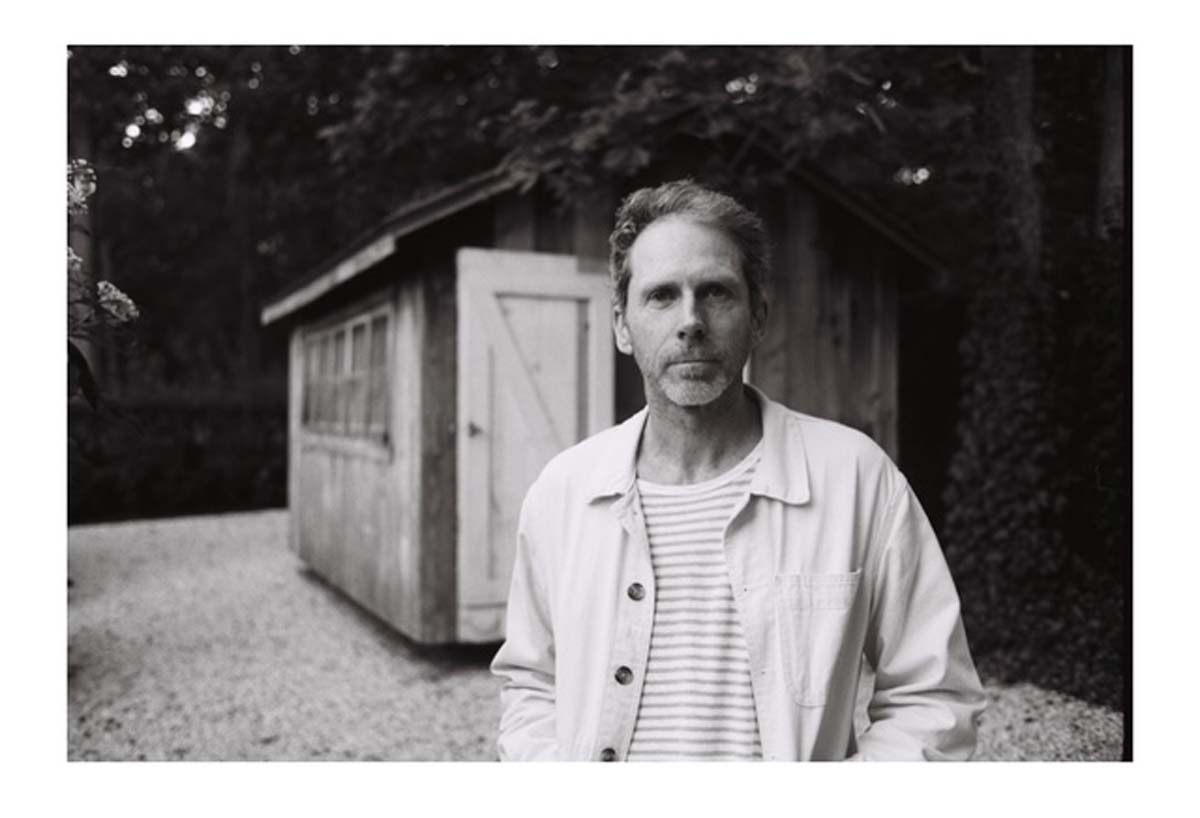
Editor Kirk Baxter, ACE outside his “editing shed” in the Hamptons, New York.
Kathryn was in the office next door and would just pop in and out. I started in December. I did that on my own before we had a cutting room, so I was about halfway through chapter one, cutting by myself and I would do these calls with Kathryn in the afternoon to say, “Hey, this is what I made,” which was mostly so she wasn’t tormented.
I was off at my place and I just wanted her to feel included. I was moving with a bit of speed. She had to sort of endure my selection process, which is pretty lengthy because I want to know everything that she shot. I want to semi-cut all these different options and say, “We could leave it this way or it could go this way or it could go this way.”
Then I would bring her in and say, “Hey, watch all of these.” And we’d get excited about something and say, “Okay, let’s try to work with that pace.” Then I would pin it down.
There was this sort of galloping aspect to what we were doing, where I was the viewer at some point, and we’re excited about making it, and she was so excited to show me the next scene, and I was so excited to view it and see it and experience it, that I didn’t worry about the forensics of the work yet.
I was keeping this bin of what I considered to be beautiful shots that I hadn’t used, because they weren’t essential in putting together this first run-through of the story, but I knew that there was going to be a time when the people that we saw on the monitor or heard on the telephone - when we experienced them in person in later chapters - that I wanted those performances to be exactly the same.
I wanted to be using the same data, but I didn’t know what they were yet because I was starting in chapter one, so I was kind of loose about that. I was loose about what’s in the monitors, on the big screens. I just really wanted to cut it with our hearts, with our guts.
Kathryn was so happy in that space when we finished the movie, like the first pass through, she said, “I love this.” But I said, “Now I’ve got to go back and do all this forensic stuff.”
And she came in on a Monday morning and asked, “What are you doing?” I told her, “I’m going to make this match to that.” But she said, “Who cares?”
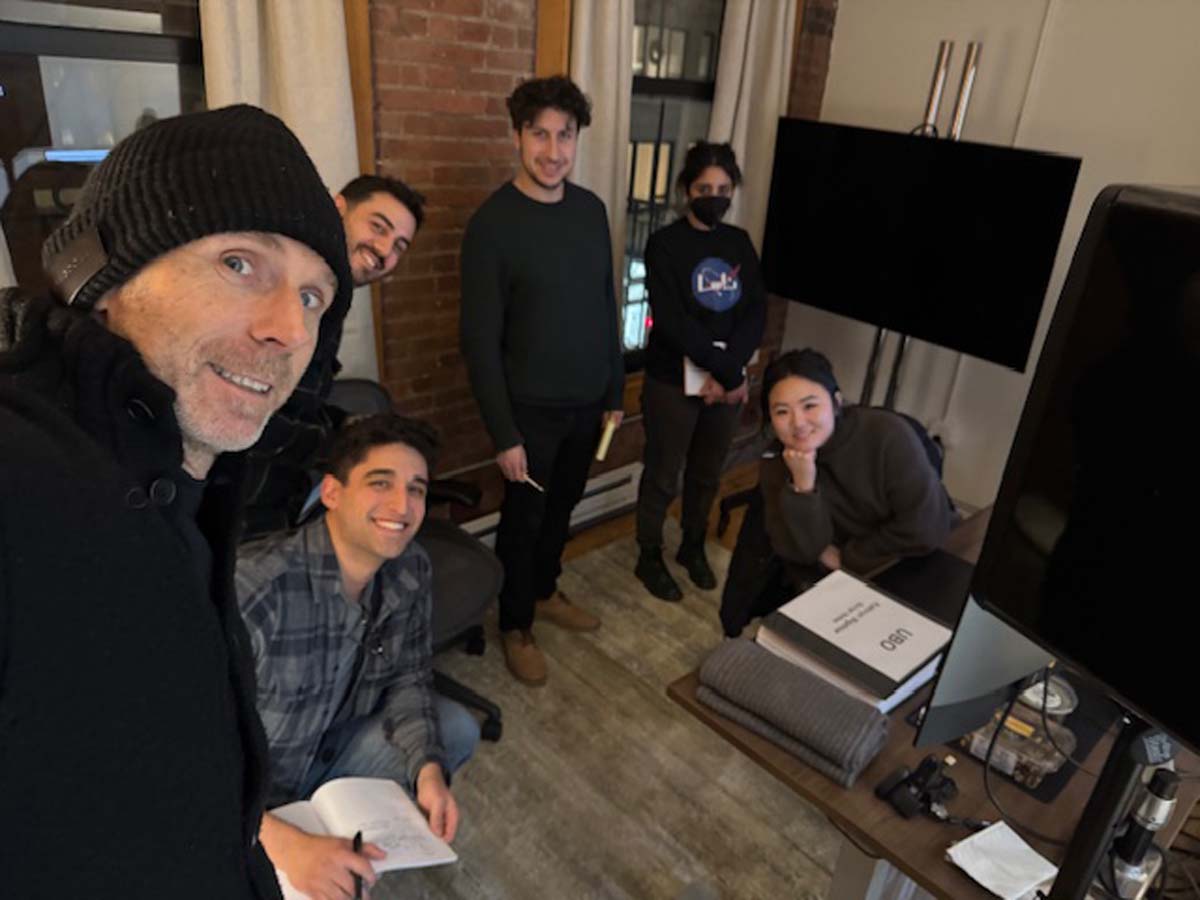
The Post team. Kirk to the left. Jordan Farewell - AE - Top, Joe Bastien - AE - Bottom. Alex Gurvits - VFX Editor, Zaineb Abdul-Nabi - AE - Top, Jennifer Chung - 1st - Bottom
She might take offense to how I’m presenting this. Kathryn doesn’t have “that’ll do” in her. She’s more of a painter and more of an artist, and as long as the feeling is correct, she’s okay. I was just obsessive about wanting the data to be exacting and how it unfolded within scenes.
If they’re saying it’s going to take this many seconds, I want it to play out in that many seconds. And then I want it to match from one chapter to another. There was so much forensics in that, that I did that stuff when Kathryn wasn’t around.
I promised her, “I’m not going to go backwards on anything for the sake of continuity and the exactness of it. I’ll take you through – ‘Here’s what we had. Here’s what I changed. Here’s what we had. Here’s what I changed it.’”
I thought it was really important that even though we’re dealing with a fictional story, we were trying to present a fact and make it seem factual to me, using the exact same performances through the three different acts, whether you’re hearing them or seeing them. loved doing all that work.
I sensed that in a specific line. The president says “That’s insanity.” And one of the generals – after quite a long pause - says “No, that’s reality.” And that’s played twice in the movie, at least maybe three times. I sensed that that was the exact same time and the exact same performance.
Yes. I loved the little bit of dialogue with the general asking, “Did you see the baseball game last night?” We just enjoyed that so much to help frame it in chapter two, I then took that bit of data and made a space for it in chapter one, so you get it as a bit of riff-raff audio, so you’ve laid the groundwork for it.
It’s just banter, then you get another bite at the apple. There was a lot of that. That was a bit more than what was in the original screenplay. I think I did a lot more repetition than was in the original screenplay.

Kirk on the Mix Stage. Editor, Kirk Baxter, ACE / sound designer and mixer Paul Ottosson / Director Kathryn Bigelow / Producer Greg Shapiro
Did you call Billy Goldenberg – one of Kathryn’s former editors - and ask, “Anything I should know about working with Kathryn?” I’ve heard other editors say that they call a previous editor that a director’s worked with.
I didn’t know Billy, so I didn’t call, but I had Paul Ottosson who’s the sound designer that’s done a lot of work with Kathryn. I think once Paul came on board with The Hurt Locker he’s done all her movies since. We chatted extensively.
They’re the best of friends. In a lot of ways their relationship was how I had the confidence to work with her. I did this Apple commercial with Kathryn called Hollywood in Your Pocket.
It was a really fun three minute ad. She did a terrific job, and when we needed the sound design - after I’d sort of assembled it - she said, “Oh, let’s call Paul. He’s my guy.
He’s just the best!” She raved about her sound designer and it was just so generous and warm. When I was asked to do this movie, that stayed with me.
I thought, “If this is a person that talks about her key people this way, she’s a good person.” Because we are very vulnerable. The whole thing’s really sensitive.
You have to realize how sensitive the director is to their own work.
They’re vulnerable in the beginning. Then as you build it and it takes shape, their confidence grows. I sense that’s why I’ve got to move so quickly if I want things to be in play, I’ve got to really experiment. Everything’s pliable. Because once love starts to set in, the resin sets.
I wanted to talk a little bit about the dynamics of tension and release. In one of the opening scenes there’s a lot of tension there, but there’s also joking about food and showing the human side of these people, releasing some of that tension. Can you talk about the intentionality of that?
The moment the dot (missile) appears, there’s a crisis in the first act - the moment you realize that it’s not just a test - and at that point it keeps a grip around your neck, but when you don’t get an answer and it stops, there is a resetting and you go back into being a regular day.
That gives the viewers these chances to sort of relax, and then you start dropping your clues - especially at the beginning of chapter two - that this is the same information repeating itself. So there are the breadcrumbs that we’ve been here before.
But in regards to when the film itself opens, it’s a slightly different thing. We show the shoe leather of it being a regular day. Normally Kathryn’s movies aren’t very score-heavy - hardly any score at all.
But I put scpre underneath the shoe leather, having this sort of riptide - this pull - musically to kind of say, “These people are just showing up for work, but something’s coming.”
To me, it made wandering down corridors so you could hold it longer - you could experience it longer - because there was a spell being cast.
There was a gathering storm. In the other episodes, you didn’t really have to do that as much. You could enjoy the president playing basketball because there’s a tension that already exists without us having to tilt it.
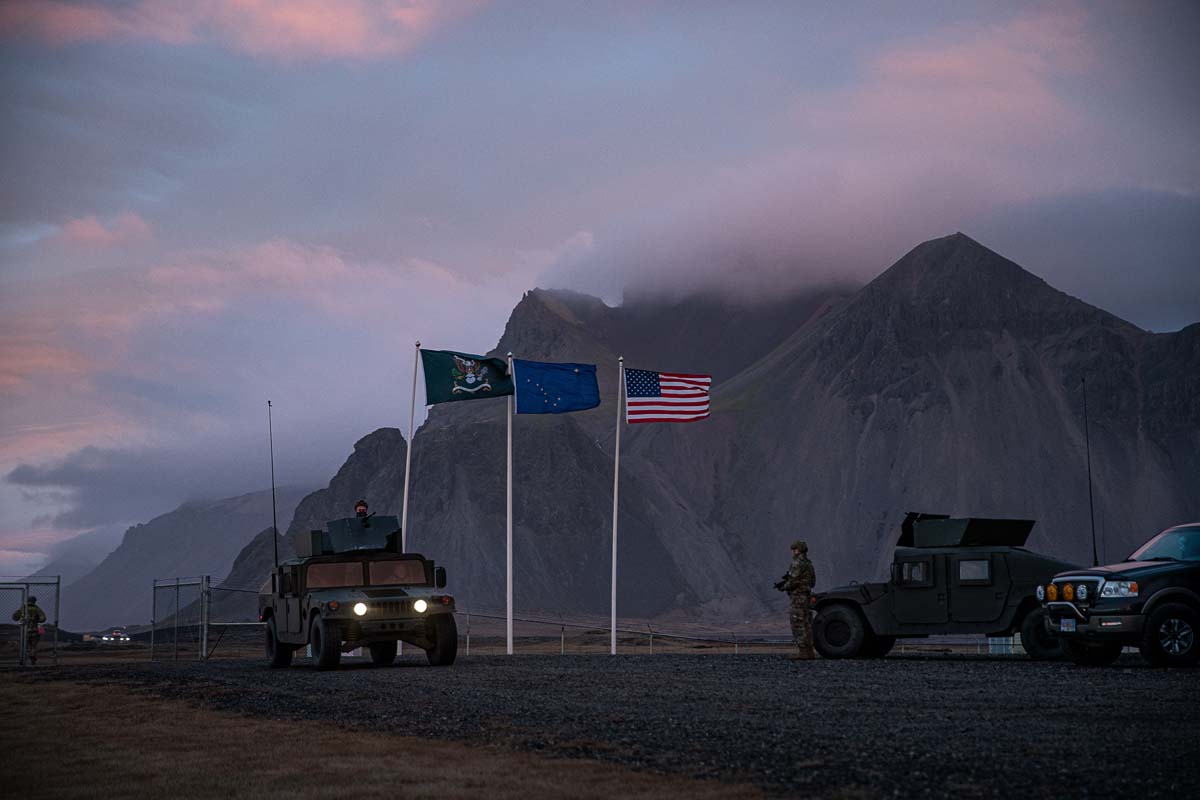
I love what composer Volker Bertelmann did with the opening thing at the military base. It’s kind of serious looking, whether it’s just a regular day and they’re having their banter and the chit chat. It’s still kind of like, “What the hell do you guys do here?”
He basically set the palette of the theme for the movie and blasted you right in the beginning with all of the instrumentation. Here it is at 100% straight out of the gate.
Then he strips it all back and starts presenting simpler themes broken down. It’s like doing a duck three ways. He really sort of gave you all the colors and then just started coloring with one at a time as the movie went on.
How did you temp with that beforehand or were you temping?
It was Kathryn’s idea to work with Volker. She said to me, “Do you know this composer? I’ve been watching his movies. I want you to go back and watch all of his films.” We watched All Quiet on the Western Front and Conclave and I had done another Apple piece - a 15 minute war submarine movie with Edward Berg that he scored.
I knew that he was a gentleman and really easy to work with - a lovely guy. So I took Volcker’s music from previous films, and I temped the entire movie with it. That’s how I worked.
After we’d pretty much cut the film we flew him in from Germany to New York and sat him down to watch the movie filled with score from his other pictures.
It had the shape of what we needed, but we needed an original score, and he could obviously manipulate it more and get it more hand-in-glove, but I had worked out where we wanted music - where we wanted to come in - what we ultimately wanted it to do.
You can find musical ramps in scores from other films, but things that build up, build up, then fall off a ledge. We were finishing chapter one that way. Musically, we’re finishing chapter two with the exact same piece of music in the temp musically.
Then we hit it again for chapter three, and I always thought it was a bit of a rip off to “three times in a row” now we’re taking your toys away. Volker didn’t go for thriller.
He went for loss and isolation. So it wasn’t so much of “You’ve got one minute to make your decision. What are you going to do? Tick tock, tick tock.” It just floated off into that ending and I thought that was beautiful. It was much more about feelings.

Those spotting decisions for the music cues are interesting. For example, at the very beginning of the movie, you’ve got this tense music which you explained during the shoe leather of coming into the Situation Room there’s this tense music, but then - where you would think it might be the most tense in the Situation Room - it’s played dry, correct?
If you’ve got a movie that’s constantly tense, it’s difficult to get rid of the music. I think you need it to go away so it has impact when it returns.
It had a lot to do with when I got the count down in chapter one where they were going to knock the missile out of the sky, and I’ve got all of these faces watching it - I call them the “frozen moments” where the oxygen gets sucked out of the room and the dialogue stops and it’s all of these faces. It’s where I’ve got the most faces in the movie.
So I’ve got everybody at the White House Situation Room and everybody at Greeley, and there’s multiple faces and everybody’s holding on by their fingernails waiting for this.
I cut all of that without score, and it worked, especially in that one sound of the telephone still ringing. I think it was Rebecca going, “hold, hold.” I just fell in love with how it was.
I say lots of “I’s,” but anything that I love means Kathryn loved it too. So please - anyone listening -Kathryn made this movie. I helped her, so please turn the “I”s into “we”s.
But I loved that that section didn’t have score on it and I just protected it. So when we got into scoring it, I just never wanted to put anything there because I thought it worked all by itself.
And there was the wonderful reaction of Rebecca when the missile completely misses and it’s confirmed that it missed. She reacts like she got punched in the solar plexus, then that’s when the bass comes in.
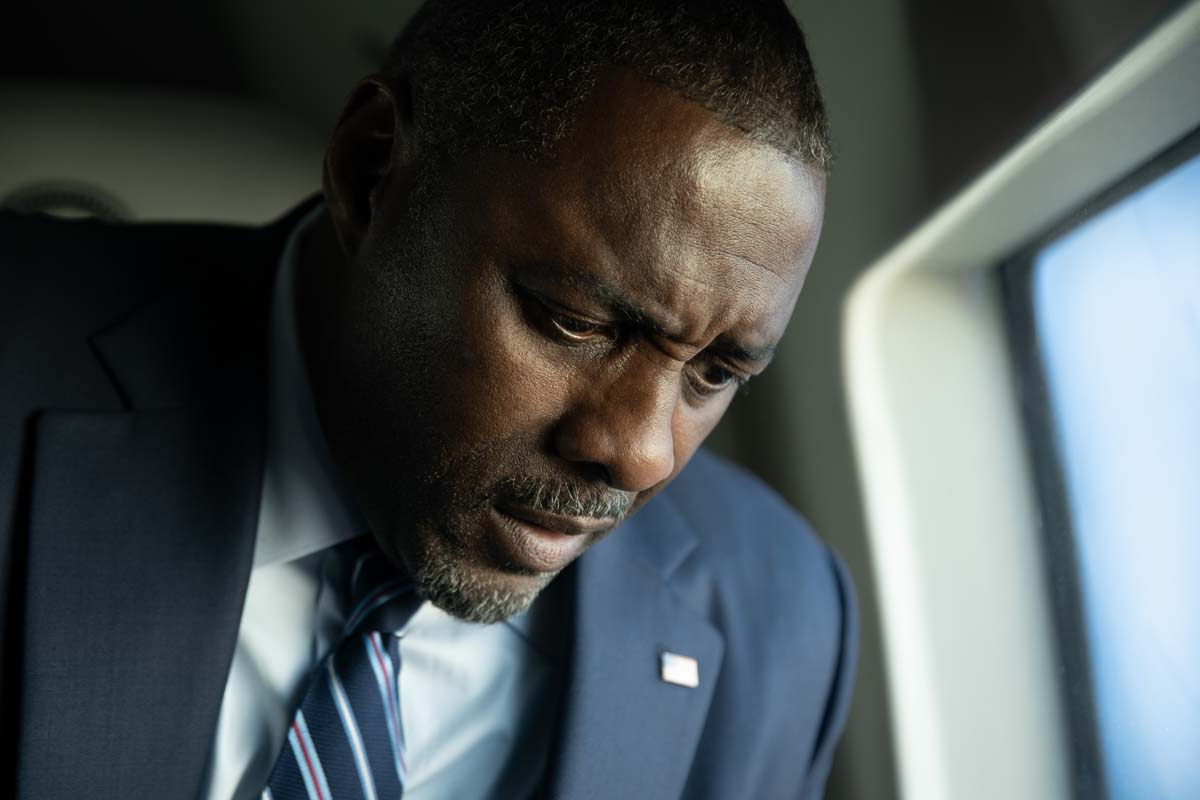
So now going back to having cut it in story order, that becomes our fact - how long that took. And because I could pad it out, because there were so many faces and people to use.
That’s now my tempo when I go to chapter two, and I’m now in a different location with a different set of people and a different set of circumstances with the same information.
I used that as my guide, and if it doesn’t hold, I’ll trim a little bit, then I got to go back to one and see, “Let’s take a little bit out. Does that hurt me? If I take a bit out of this one to make it match? Well that hurts.
Okay, I’m not going to do that.” So it was this back and forth. But we have music in the next chapter during that same countdown because we’re not experiencing it the same way. We know what the outcome is going to be, but I think we can experience it a different way, so we put a bed underneath it.
And I found when I watched it, even though you’re getting the same information, when you experience these other people and you go one step up in government, there’s this weird thing where you think it’s going to work out - like something good is going to happen. We’ve got this inherent optimism, but it’s the same kick in the pants.
In the first chapter you don’t do quite as much intercutting, but as you start to realize that all these different places are interacting with each other, you are cutting back and forth between the various parties. How close was that to scripted, and what were some of the reasons you intercut things differently than were scripted?
One was because of the repetition. I loved the idea of getting the same information again. At one point my assistants gave me a breakdown of where I strayed from the script just in case Noah asked me where I picked this pocket? But Noah loved the film.
Noah is the screenwriter, correct?
Noah Oppenheim. He was terrific and he embraced what we did. He did a very clever, very exacting screenplay that didn’t repeat things, because if we’d learned something, we could pick it up where we left off and carry on in the next chapter.
The first chapter would tell us this bit of information, then we would leapfrog that section in the second chapter.
A lot of times I was editing without the script in front of me, and I found the glue to connecting them with the things that we knew was to repeat phrases like “a bullet hitting a bullet” and “my daughter lives in Chicago.” The biggest place I did it was with the president in the helicopter at the end.
The whole conversation after the Russian phone call where they debrief the president, that all takes place in in chapter two, and the president was only supposed to be heard - just a voice for all of that.
But when Kathryn captured his voice, she filmed it to keep him in the zone, so it was such a complicated script that when she was filming all that stuff in the helicopter, she needed him on camera.
She filmed it all. That’s where you had the ability to really slip and slide and choose how it best unfolds, and you could stray from the script if it benefited you.
We found the air came out of it a tiny bit in chapter three, because you went to Africa and the ticking clock sort of disappeared, and you’re in these wide shots of the elephant. It was a bit of wondering “why is it all so calm?”
When we repeated that whole debrief and you got to see the stress of the president, even though we knew exactly the words he was going to say, but you got to feel it through him - experience the look in his face when he says, “If that’s what you believe, your choice is surrender or suicide.”
Watching him say the words - which to me was the critical part - of “I need a minute,” then you go to Africa and it was two minutes till impact. He’s trying to connect. He’s calling his wife. But it was this thing that added this tension to all of that African scene of just being with his face prior, with that dialogue.
So I understand completely why you wouldn’t write it that way, because we’ve learned it all, but for whatever reason, it improved it when we experienced it again. There was that sort of fluidity to it.
Then during the countdown and the miss, you can be on anyone’s face in any location for any part of that information. It was a bit wide open, even though he did a very detailed script, and I love that about it.
It leans into how Kathryn shoots following performance and then following those performance really gave you human pauses without having to do too much backstory on people.
You could kind of tell their stories just by how they process what was happening, and that’s what would pump the brakes on it is: if someone was giving you something incredible we didn’t let it slide. I was always on the lookout for these frozen moments of everybody.
And in some ways they were like my planted flags of saying, “OK, that’s a fact. Let’s build around that. Let’s make sure we give this its moment. I think all of the principals actors get these moments where they just stop moving for something that’s such a kinetic movie. They just stop moving and the movie slows down through them.
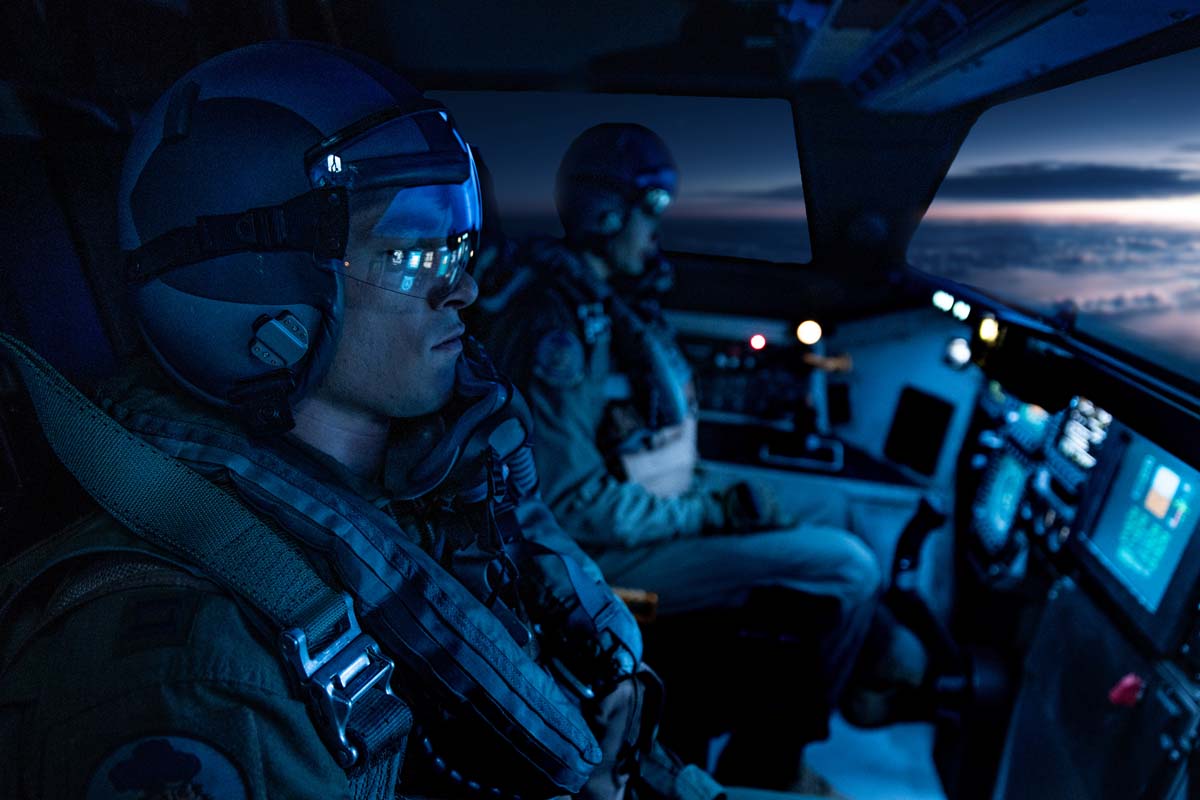
Did you have to do anything special as an editor to deal with the way the film was shot? Much of this is handheld. Do you have to treat the footage differently because it’s handheld?
It will vary in some ways, but it does sort of dictate edits because the D.P.’s chasing around what is of interest. I was very aware of that in Stratcom. There were so many things for the D.P. to get to.
You got a lot of “French overs” of actor Tracy Letts that would drift off to the monitor and -because of having these conversations with the monitor – the D.P. would hold it for so long, and then he would pan back over to something and I would have to work out:
“All right, if I stay on Tracy at the front and let this camera move, bring me up to the monitor for that, hold the line on the monitor long enough to then come back, then what do I go to?”
I would really feel out how I could utilize the handheld “editing” that was built in, and I would run with that for as long as I could, because that gave a very organic feeling to everything and it starts to mold itself.
You mentioned Kathryn’s love for her sound designer. I definitely felt a lot of tension in many scenes based on the sound design.
Paul did a temp mix pretty early on. We got to the end of the first assembly of the film reasonably quickly and he did a temp mix of that. Then when I did all that forensics work, we chased that a lot so we knew where he was going to go.
I was a bit in awe. I was pleased with how much he elevated it from that temp mix to the final mix. I was naively asking “Why do we need so long for a final mix? He’s already done it!” But the spell that he cast with sound really came in that final mix.
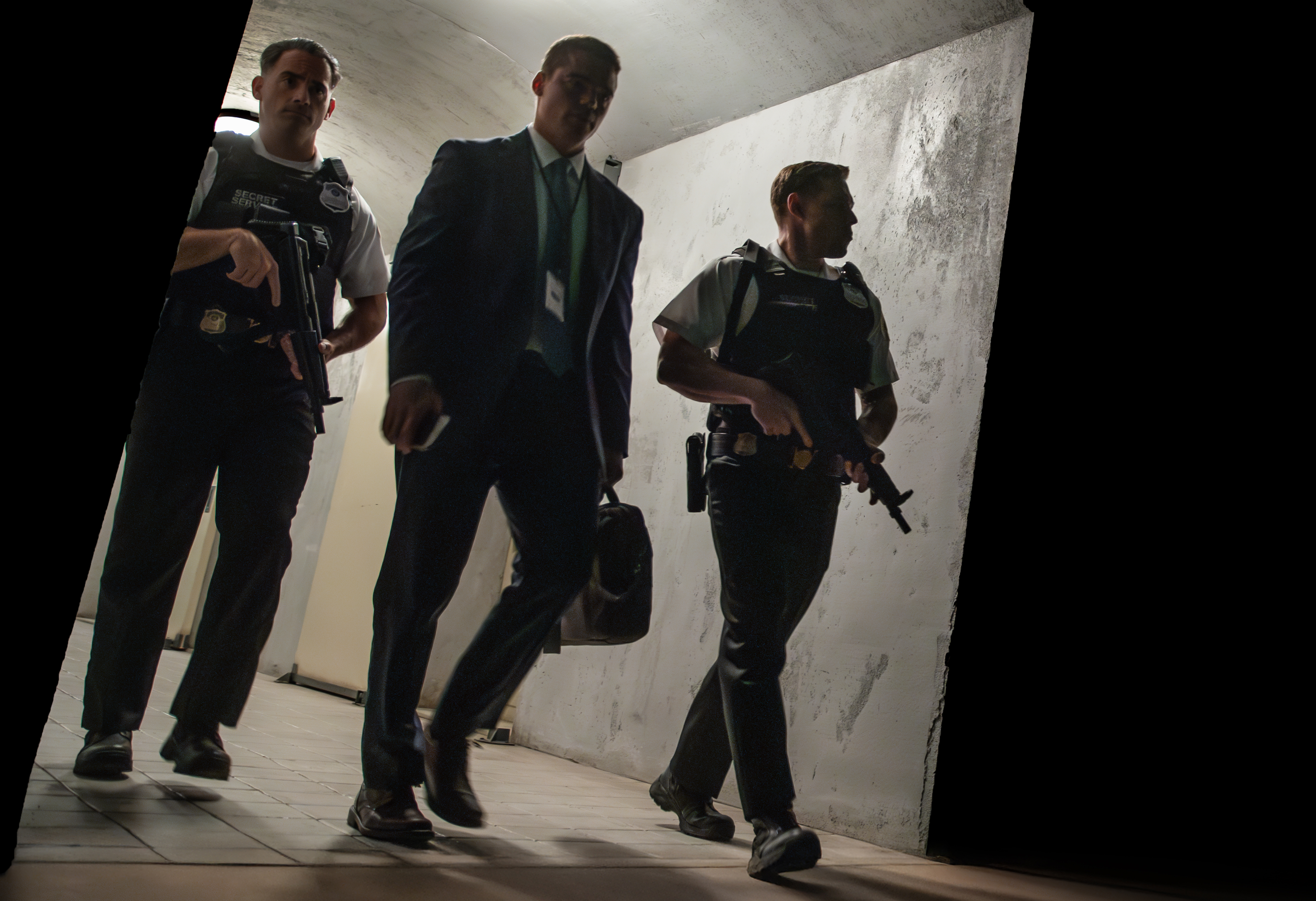
What I was so happy with - because I get really syllable precise about when I’m editing is this crossing mid-sentence between locations - and that happened when the deputy found himself in the PEOC (war room).
I would be with him where he’s on the monitor with kind of a crunchy voice then bang, you’re with him in person, walking down the street outside in front of the White House.
I’d be very conscious of where I could make those edits without obscuring what part of a sentence is a good jumping off point for it to not mangle it.
You put this fake phone sound on the vocals in the picture edit so everybody sounds like they’re on a CB radio. I called Paul pretty early on and begged him to do something different because our phones sound good these days, but it still needs to help all of these transitions occur.
I think that’s where so much of the dynamic feeling of the movie was going to be in changing how we’re presenting dialogue based on location and he really took care of that.
He loved making it very grubby and dirty. He’d pay close attention to information that you were going to experience a second or third time and he would really muck it up the first pass. So we found ourselves in the mix telling him, “That’s hard to hear, Paul.” And he’d say, “By DESIGN!”
Everything is intentional, right?
SPOILER ALERT
Let’s talk about the moment when the SecDef jumps off the roof and the choice of sound design and shot choice at that moment.
I love when the Secretary of Defense jumps off the roof and there’s the rush of people coming at him. That was all loop group. You’re creating these little bits of sound because the first time he jumps, it’s just heard in the background and the president asks, “What was that?” It’s taking those things and repeating them.
That was one of those forensics things that we built pretty late after loop group, and then repeated three times. When he went off the roof, there was other coverage, but we stayed in that wide that was sort of obscured. It was the same feeling we got watching selects with Kathryn.
The first time that happened it felt so real because you didn’t have a clean look at it. It was like, “What the hell?” You just have to hold it long enough where you’ve sort of got the answer, but then it’s whipped away from you.
END SPOILER ALERT
That was interesting to be on that wide shot. I certainly realize why you did it, but it’s interesting that you had other coverage there.
We could have been much clearer about it, but we just did it in the most honest way we could. And I love when we then took that information and you get to the president because when you’re in Stratcom originally it’s just something you hear, then you’ve got Tracy Letts saying, “Sit down! Carry on. Everything’s fine.”
And it just keeps moving. It’s only something you listen to. But then when we witness it, we go to the president and he says, “What was that?” And before he gets an answer - the same as the audience – it’s just on with the next thing.
And that’s the movie. That’s the ticking bomb. We could have built much more of a fence around that to exploit it, but I loved experiencing it the way the president did.
You have edited with a lot of different NLEs. I know you’ve cut on Premiere. I think you’ve cut on Avid. I know you’ve cut on Final Cut Pro. Why do you choose a specific editing system and do you have a favorite? Or do you have a favorite for specific reasons or projects?
We were on Avid because it was really the only game in town. Then there was a curiosity about Apple’s program early on because all the students were using it. I found it very user friendly. I loved it.
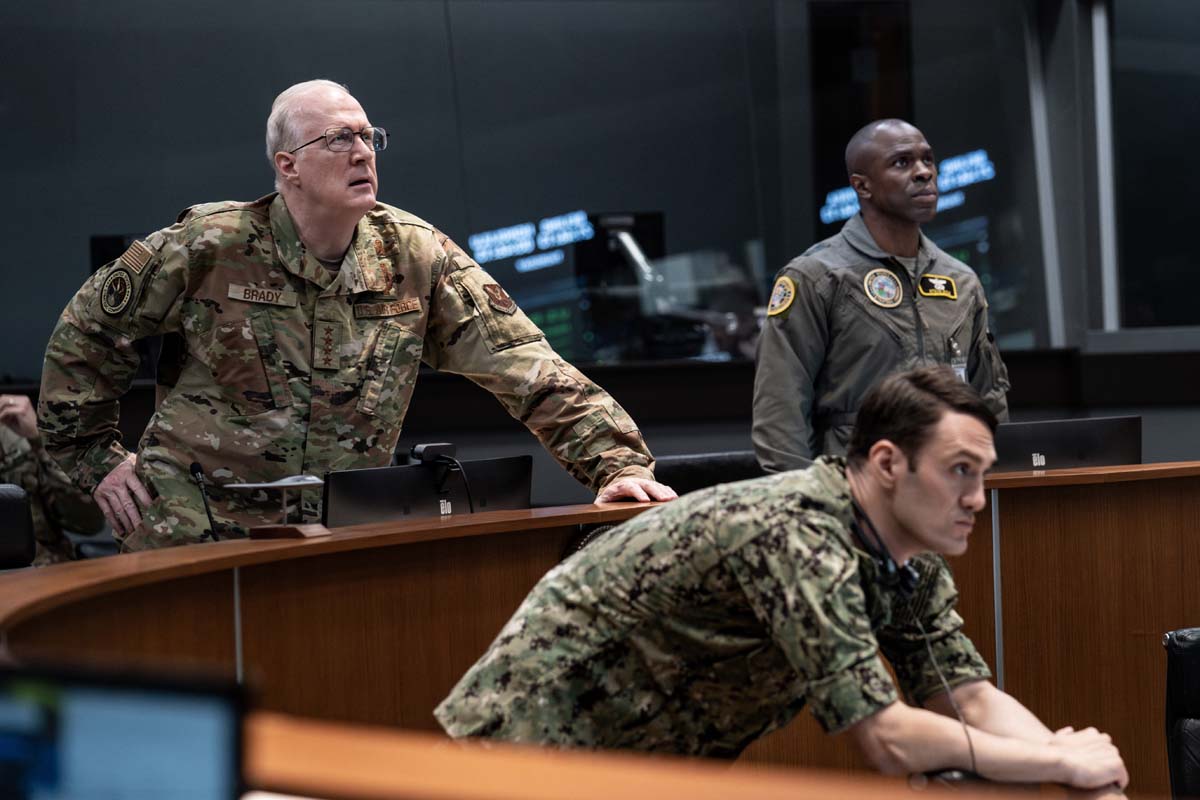
What was the first movie you cut on FCP?
Social Network, I think. I loved working with it. I thought it was terrific. Then they reinvented it and removed its professional ability and everybody had to abandon ship. I know that they’ve since gone back later, but the damage was done and everybody bolted.
At the point when we couldn’t use it we had to return to Avid, but Premiere was also an option. And it was director David Fincher that was interested. He wanted us to explore it.
It was really the assistants who are far more technical than I am to look into seeing if it was a workflow that would work for us, because there’s so much in-house that we do.
When I work on Fincher’s films, there’s a lot of stabilizing of shots, a lot of visual effects. There’s a lot of grading in-house, so it’s constantly being graded and updated as we’re editing, so there’s a lot of data being passed back and forth.
So I let that decision be made by those that really handle the data. I’m sort of the the easiest part of it. All I worry about is, “what’s the muscle memory?” I have to bash it out with my big thumbs the same way I did it back when I was on Avid.
The main thing for me is speed. I want things to open up quickly. I want everything to connect quickly, and I want to be able to just keep repeating what all my muscle memory is without it taking up any brain space. So we’ve worked with Premiere ever since because there hasn’t been a reason not to.
The first time we worked with Premiere - I think it was on Gone Girl - they (Adobe) were amazing about having people down the hall and adapting to what we needed. We would tell them, “You guys need to do this” and they would write the program to do it.
But what I was requesting was really simplistic stuff. I was not reinventing the wheel on anything. I’m just not that technical. I do a lot of crops.
David does a lot of locked off shots, so I manipulate foreground and background and there’d be four images in one image for most of the movie. That’s less so with Kathryn because everything’s handheld, so it’s much more visual effects.
It’s really comping monitors and things like that. So I would happily bounce around between editing systems provided it can all get rejiggered to the keys that I use. But salute to Premiere that they haven’t given us any reason to bounce around.
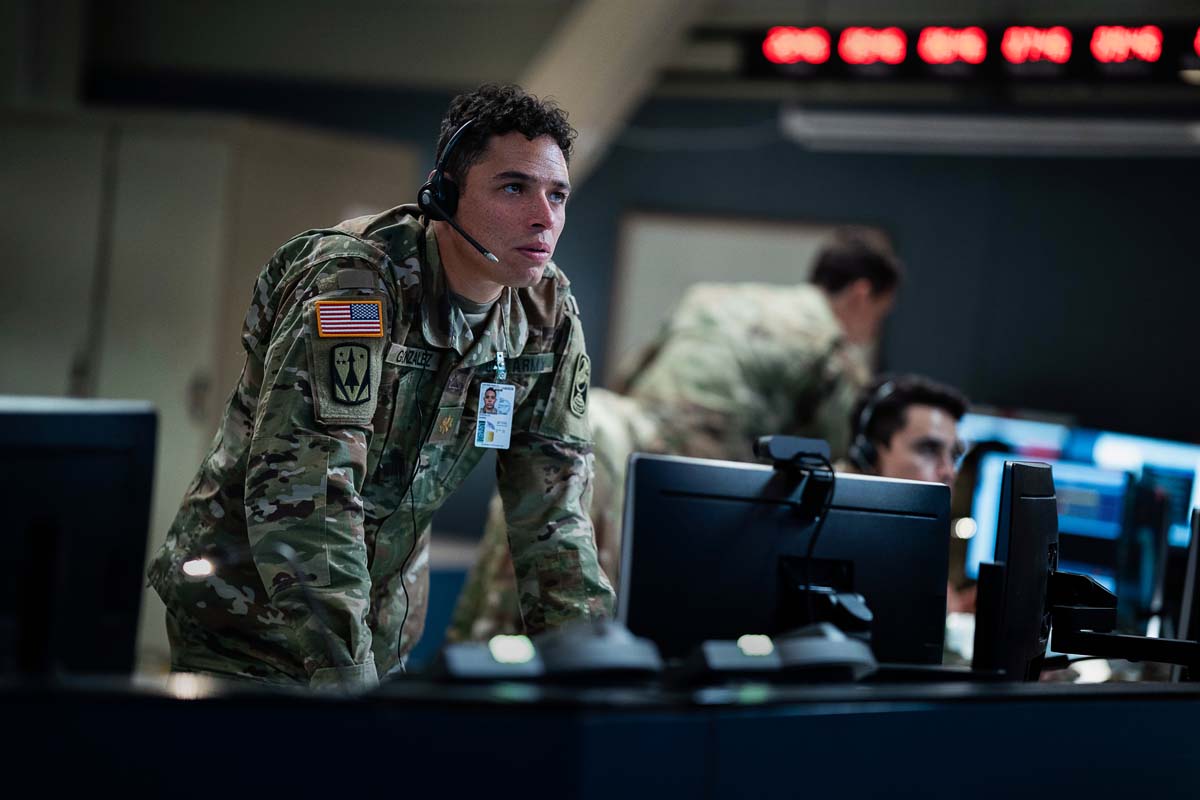
So A House of Dynamite was cut in Premiere?
Yes.
The decision of when to show various locations or jump to parts of the story were obviously led by the script, but some of those story beats seem to have been able to be moved anywhere. What were the creative choices around structure?
There were some that moved around. I have a little chart that shows what we re-structured. I know we moved around how the movie started in the very beginning.
We stayed in Greeley for longer. For example, he finished his call and came in straight away and that was written to go to Washington and then return to Greeley. We struggled a little bit, but not to the point where Noah, the screenwriter, would watch it and say, “You broke it
Are there other things that you want to talk about?
The movie was cut for our own pleasure with our heart and with our gut. Then the second part was our brain. All of it was just as much fun. There was a lot of confidence with Kathryn that the movie was working. She felt great about it.
The very first screening wasn’t for the studio. It was for this room full of generals. We had a bunch of three and four star retired generals that came to Tribeca. We put it in the screening room at DeNiro’s joint at Tribeca.
I remember saying to Greg Shapiro, the producer, “If anyone’s going to be able to blow up what we’re doing, it’s these guys right here.” It was so important to Kathryn to be credible and for them not to call bullshit on anything. It was people that were from think tanks in Washington.
It was a pretty highbrow group, and that was the most fascinating post analysis at the end of the film. They embraced it. They loved it. It passed the bullshit test. That was the only tightrope walk that I felt, because instantly those at Netflix said, “This is terrific.”
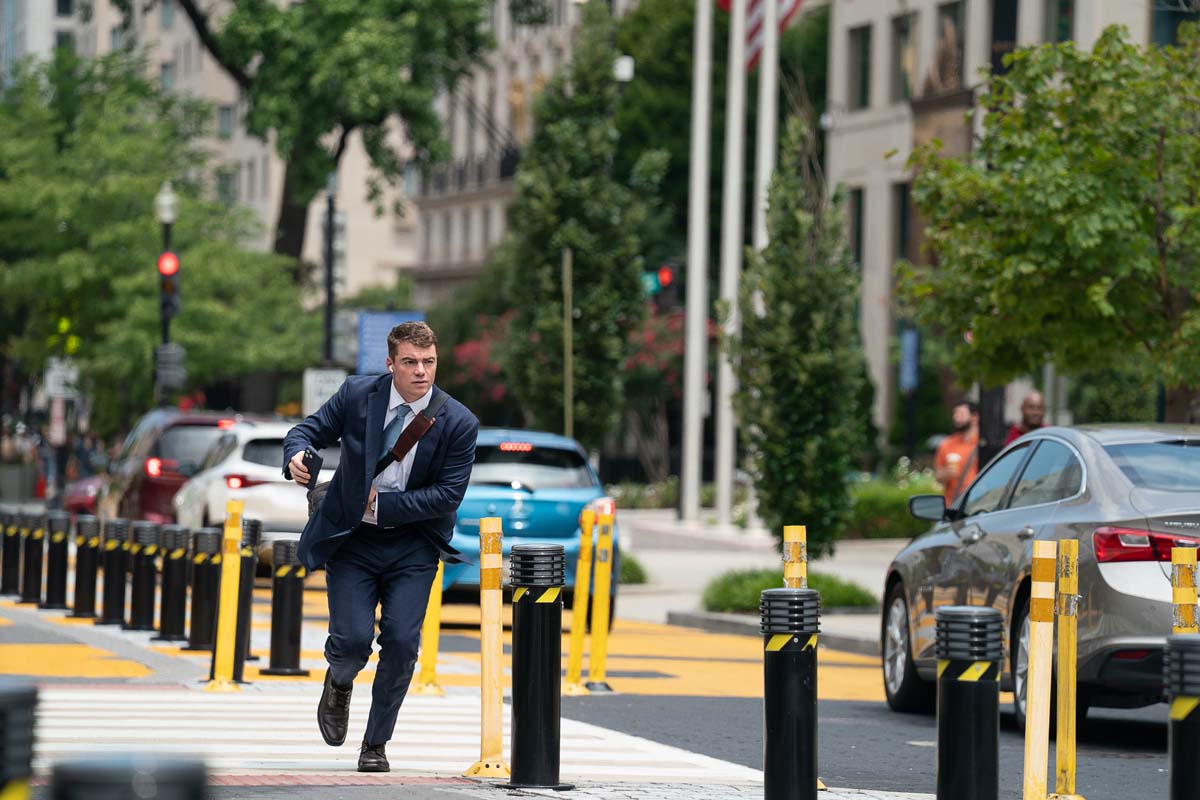
There was one screening where there was a bit of nervousness about the length of black that I was sitting in between things. I think it was just because Netflix worried that people were going to think the movie’s over.
My response to that was, “Wait till you hear what Paul (the sound designer) does. No one’s going to believe this is over.” The issue was mostly between chapter three and the very end when people go off to Raven Rock where the bunker is. There’s a really long stretch of black there, and Paul just turned that into an audio assault.
You’ve already talked about how you were trying to keep performances the same in lengths so that they match between chapters. Did you find - because of the repetition - there were places where you needed to tighten that since the audience knows this information?
Yes. Though only if it served us. There were little bits where I tightened it. When the movie starts there are so many places you can be… so many faces, and the movie sort of shrinks.
But the audio of what you’re listening to - which is so much of the movie - grows because it’s collecting bits of information from new people.
So I call it the “Row, row, row your boat” idea. It’s just more and more “Row, row, row your boat.” People inside the PEOC would say, “What was that? What did he say? What did he say?” So there are all these little bits of info that are getting added to it each time.
So the phone conversation becomes much more dense, but there are less places to zip around with. So the performances - by the time you’re at the end - need to be really bang on to hold everything.
I was struck by your choice to cut to a kind of an insert shot of the Eisenhower painting in the middle of a tense moment with the SecDef. Can you talk about that creative choice?
I found one of the most useful things was the B-roll that Kathryn always picks up from every place. They go film what’s hanging around on the walls and the paintings.
The first time when we put that scene together I never left the shot of the Secretary of Defense because his performance - waiting to find out if the missile will obliterate his daughter - he’s just in this death stare that doesn’t move.
We were so taken with the performance that we could sit on it forever. Then when I did the second pass going through it and I had all my little shots we hadn’t used, there’s Eisenhower and I thought, “What if we just try this?”
It felt almost like sacrilege to cover up his performance, but there was so much power cutting to that that it felt like history was watching and looking down on him.
And it also allowed me - even though his performance was perfect in my opinion - because now I could take out a third of it, I could slide it around so that he never moves a muscle. Doesn’t blink. Nothing changes. Cut to Eisenhower.
Return to him, and the only slight movement you get is when the missile misses and there’s this little sagging of his eyes and his face and it’s the smallest thing.
You put a little bit of musical score underneath it and hit it, then get to the president with the same kind of emptiness.
It’s those cutaways. I just love the Eisenhower cutaway. You’ve also got the bust of the ex-president as well, but the Eisenhower one … It took me the second pass to have the courage to use it.
I love that editing is a process. It’s not one and done.
No. And there were those changes, like “This is better if it’s tighter” or “If I could just get that little thing that’s bugging me that little jitter that occurred, I want to slice that off.”
Then sometimes I would assess and think: “I don’t care if this is two seconds faster. No one’s going to know. As long as it all felt the same, the more important to me was that it was the exact same voices.
Awesome, Kirk! Thank you so much for discussing this movie with us. I really appreciate it. It’s been so instructive.
Well thank you.
You mentioned that on Kathryn’s movie you started editing after the whole movie was already shot. But on the movie you’re cutting now for David Fincher, you’re editing while they’re shooting. Do you think one is better than the other?
They’re just different. We’re moving at such speed with Fincher that I haven’t worked the edit out. I’m in the process of working it out. Instead of something that’s 40 hours, I’ve reduced it to six minutes, but it’s not the three minutes it’s going to be by the end. It’s not done, but it’s a sort of back and forth that we do.
I show this thing that excites me and he lets me do it, then I ask what does he think of that? It’s this game of tennis, but not all people like playing tennis.
Some people want to see it done and others want to see your math. Others want to see “How did you get to this? Are you vetting everything? What did you skip? What did you throw away?”
With David, he feels more secure when he knows that I’m going through everything and I get to kind of cut a scene.
But the main point of the scene - the most impactful kind of delivery - I’ll show him his five bites at that apple and he’ll love seeing it structured and framed in a way where he could really understand: “Oh! That’s definitely the one.”
I take pleasure in helping and giving him the confidence to make those choices. A lot of my job is to pin him down - like pinning a spider to the wall and asking, “That’s what you love, right?
I don’t know if David Fincher will appreciate being compared to a spider, but…
I think he’ll love it!
All right, Kirk! Thank you so much for your time. I really appreciate it. You enjoy your day editing, if that’s what you’re off to do.
That’s what I’m doing. Cheers.








